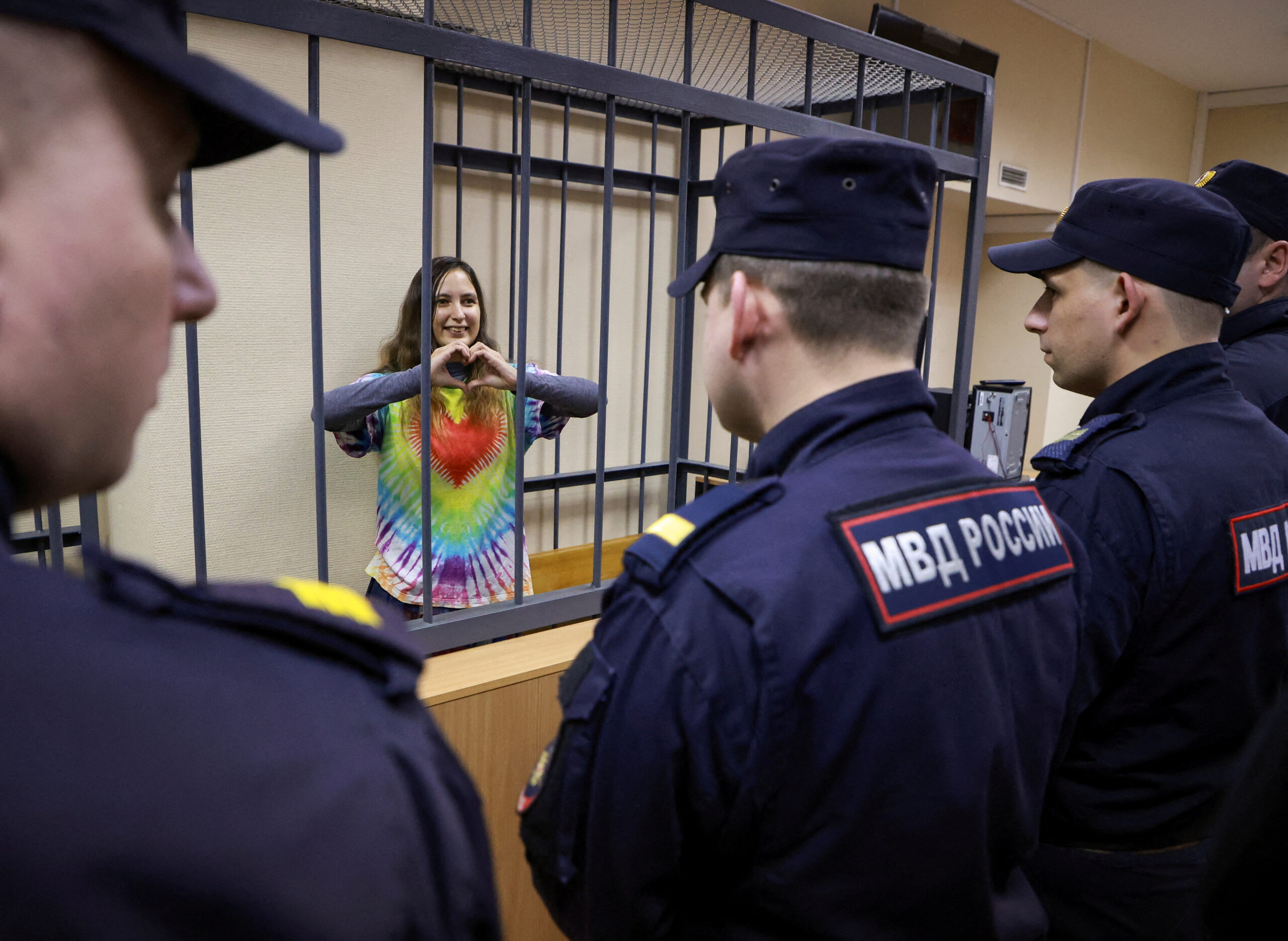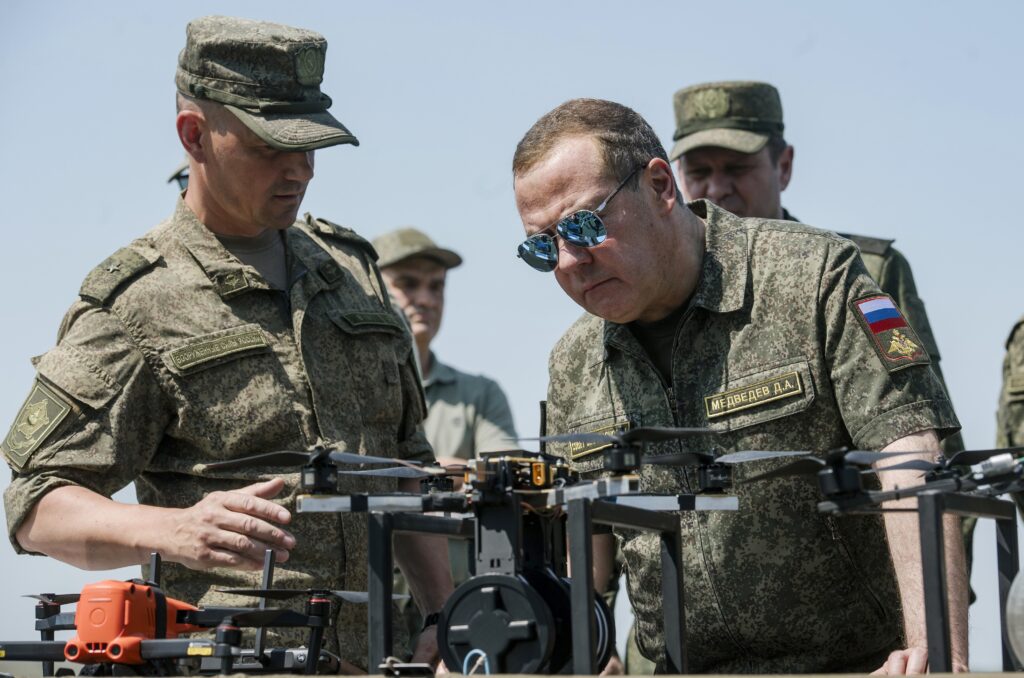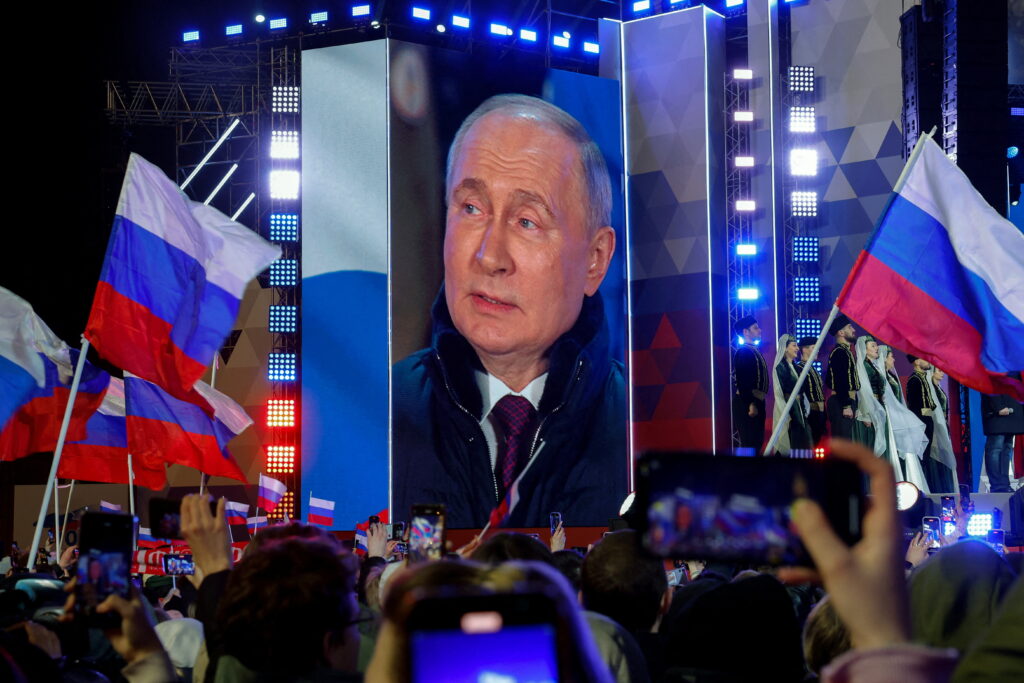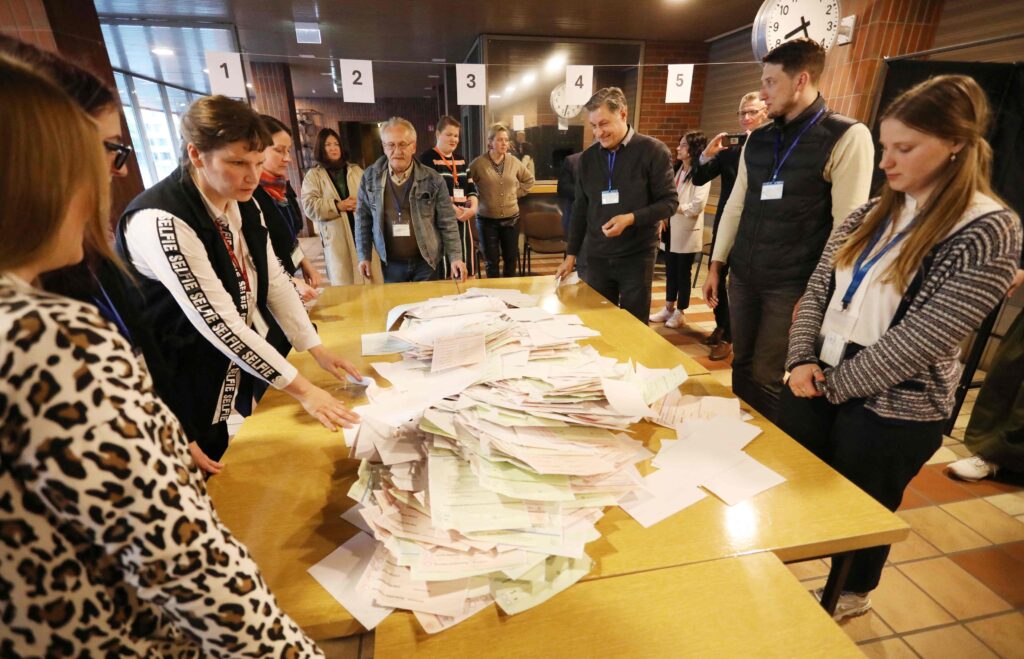Russia’s anti-war movement is often written off as impotent, cowardly and toothless. Nothing could be further from the truth. It is unique in both scale and dedication when compared to anti-war movements in recent history, yet Western discourse largely doesn’t understand it.
Western public opinion often has an idea of what a protester is. We know what they look like, with a slight regional variation. They are youthful and articulate and holding a placard with a clear message. Maybe they have a bullhorn or a cool mask. The protester is sometimes allowed a Molotov cocktail, although then their English-language slogan needs to be really good lest the protester transform into a rioter.
Up against a coercive state
The Russian anti-war movement isn’t good at performing for the Western gaze; thus to understand Russia’s anti-war protest Westerners need to part with their ideas of what protests look like. Instead of neat demonstrations that would look stellar on front pages and profile pictures, Russians opt for a type of resistance that is more subtle, yet no less powerful.
Russia’s protests began in accordance with Western expectations. On the morning of 24 February 2022, people went onto the streets in more than 50 cities throughout the country. The ensuing demonstrations were the closest thing to a Western-style protest — mass turnout, a Molotov cocktail, and a burning car. Police brutality was immense. On 24 February alone, 1,974 people were detained, per our calculus. To be detained one didn’t need to throw a Molotov or storm the Kremlin — some were detained «pre-emptively»; others were random passers-by.
People still took to the streets. Over the next weeks record numbers were detained, beaten and otherwise humiliated across Russia. We have documented extensive abuses — cops would choke, beat, taser people en masse. We know of at least 413 cases of police violence during 2022 rallies. Over the first two weeks of protests, at least 14 906 were detained in over a hundred cities — 170 of them minors.
The protests brought no change, but a lot more repression. A repression from which not even celebrities and leaders were safe. Attempts at overtly violent resistance were swiftly squashed, just like they were in 2021, and in 2019, and in 2017, and so on. It became apparent that a traditional Western-gaze-appealing protest wouldn’t work. The Russian police state is able to suppress protests relying on safety in numbers. Russia has some 630 officers per 100,000 people. This is more than double that in America or Britain.
Additionally, Russian civil society was in shambles by the time of the full-scale invasion. It was still reeling from the 2021 Palace Case, an unprecedented attack on civil society structures — following massive pro-Navalny protests, rights organisations were shut down and activists imprisoned en masse. The number of detained is estimated at more than 23,500, while more than a hundred were charged criminally.
The repression in Russia has been intensifying since 2012, producing a deeply traumatized civil society, one where opposition politicians, journalists and anyone else wanting to oppose the Kremlin constantly have the Damocles’ sword of repression hanging over them. Terrified by the prospects of a «color revolution» like those in Ukraine and Georgia, Putin’s regime launched a frontal assault on civil society in the wake of the massive 2011−2012 protest wave. The Kremlin was worried about something like Ukraine’s Orange Revolution happening in Russia and therefore ramped up their security infrastructure and began clamping down on civil rights.
Soon, every Russian protester had a Damoclean sword hanging over their head — the smallest misstep could lead to horrific consequences. Take Daniil Beglets, jailed in 2019 — for allegedly grabbing onto the hand of a riot policeman while the latter was beating on a crowd of protesters. Beglets’ case was not at all unique, many others had the same fate. And not a single cop has been persecuted for beating up protesters within the last decade.
By 2022 activists had two most recent examples before their eyes: the Kremlin-enabled Belarus crackdown in 2020 and the aforementioned 2021 assault on civil society, which put Navalny in prison. The 2021 crackdown, which followed the largest Russian protests in a decade, saw Memorial, Russia’s largest rights organisation dismantled and the human rights infrastructure taking a critical hit. Both showed the same pattern: elites did not support the protesters and the autocrats were able to exile, brutalise and jail people en masse, while also destroying NGOs that stood in their way.
The Kremlin’s repressive machine though was well-oiled and prepared to quell dissent. After the full-scale invasion, more repressive laws were quickly passed, making it illegal to even call the war a war, and giving security services carte blanche to repress anti-war dissidents at will. And repress they do, attacking people not just for protesting, but for even wearing a blue and yellow swimming cap or reading Tolstoy’s War and Peace in public. The flow of independent information was cut off with hundreds of websites blocked for disseminating the truthful information about the war with the long-developed technical tools for «Sovereign Russian Internet».
Signs of subtle resistance
Russian anti-war protests have to consider just how brutal, meticulous and effective the Kremlin had been at stomping out any visible signs of dissent. Changing tactics in the face of total brutality, the protesters began searching for alternative methods of protest early on. On 28 February Kirill Butylin covertly set a military recruitment center on fire, aiming to destroy draft records. He was later jailed to 13 years. In the ensuing weeks and months, fewer and fewer activists went onto the streets. Notable opposition leaders still remaining in the country were jailed — like Vladimir Kara-Murza and Ilya Yashin.
September 2022 saw some of the last mass street protests — when the Kremlin announced its «partial mobilization», Russians went onto the streets, unwilling to be sent to kill Ukrainians. According to our data, at least 833 were detained in 36 cities on 24 September alone. It’s important to reiterate here, that contrary to the popular argument that «Russians only protested after the mobilisation was announced» Russians protested against the war way prior to the draft, as we show above. Also, remember that not just military-age men were protesting mobilisation, but so did the demographics like elderly and women — who are not in the immediate risk of being sent to the trenches.
By 2023 street actions became uncommon. A year after the war’s start, on 24 February 2023, only 54 were detained.
But does the dissipation of the mass street protests mean that Russians have stopped protesting? Not at all — the protest format simply changed, as it became clear that «traditional» rallies and marches are unlikely to work in a modern autocracy. What is the point of going onto the streets, when the political effect is nil while you will likely get beaten or jailed or worse, and most likely the international community will not support you any further than issuing a strongly worded condemnation?
So the anti-war movement adapted to this reality, as have many other protest movements in authoritarian states. This takes many forms, and the following outlines just a few.
Russians throughout the country stand in solitary pickets, holding a sign in a public place. They know that detention, plus a fine and potentially more is a near certainty, yet they still go out. One of our interviewees, who had to leave Russia after being persecuted for solitary pickets, told us that «people passing by are far from indifferent; they comprehend everything quite well. Some filmed me, others waved, some raised their fists, some smiled, and some said encouraging words.»
Graffiti and social media
Others post on social media. And while this might be branded as «slacktivism», in Russia it carries a real price. Igor Baryshnikov, an elderly activist from Kaliningrad was jailed for 7.5 years for his anti-war posts. He is at risk of dying in prison, as he has cancer and needs special treatment not provided in custody. His mother, who Igor was the only caretaker for, succumbed to the stress of persecution, lost much of her mental function and died while Igor was in custody. She was a WWII survivor and Igor was not even allowed to attend her funeral. We know of at least 600 criminal cases related to anti-war speech, and the number of cases for anti-war protest generally is larger.
Some activists graffiti and try other ways to change the city’s landscape around them. An artist couple was ruthlessly jailed for 7 and 6.5 years for graffitiing «peace for Ukraine» in their town. Or take the case of Sasha Skochilenko, persecuted for swapping price tags for facts about the war, a Feminist Anti-war Resistance initiative. The prosecution is asking for 8 years. Sasha is gluten-intolerant but the pre-trial prison administration refuses to supply her with a steady diet, meaning that she has to make a daily choice between hunger and pain. We count a total of 29 artists persecuted for their anti-war stance. Alexandra Arkhipova’s online anti-war street art exhibition is a good supplementary reading.
Some Russians write letters to political prisoners, helping them survive the harsh realities of prison, notably contributing to Meduza’s campaign to support Evan Gershkovich, and to our campaign to send letters to Vladimir Kara-Murza.
Dissident journalists and donations to Ukraine
Some work as journalists, even as the remnants of free press have been further repressed, with top journalists arrested — like American Evan Gershkovich, or Maria Ponomarenko, who was jailed for 6 years for covering the Kremlin’s atrocities in Ukraine. Mentally, unwell, Maria attempted suicide when jailed.
And spreading information is not just risky, it can be deadly. Take the case of Anatoly Berezikov, who was tortured to death for spreading pro-Ukraine leaflets. And if putting up leaflets brings so much torture, imagine what awaits those who set military recruitment offices on fire — there have been at least 137 attacks on recruitment offices thus far. When detained, activists get draconian sentences: in Vyborg, two activists were sentenced to 19 years each, even though no one was hurt during the fire.
We can go on ad infinitum. Russians donate to the Ukrainian military and aid programmes, aid the millions of Ukrainian refugees inside and outside Russia, they are voting with their feet through immigration, they rally and organize abroad and much, much more.
The wartime crackdown, instead of destroying the Russian civil society, gave it a jolt of energy. Dozens of fresh initiatives appeared in Russia and abroad. Take Get Lost, a group helping Russians to escape mobilisation and flee abroad. By early October 2022 Get Lost reportedly understaffed a couple of infantry battalions or even a brigade. Take the Feminist Anti-war Resistance which unites Russian feminists against the war. Activist and artist Sasha Skochilenko was recently imprisoned for seven years for putting up FAR’s stickers in supermarkets. Take Kovcheg, which is hard at work building the infrastructure for the Russian anti-war diaspora — organising coworking spaces, fundraisers and other activities. Take Solidarity Zone which provides legal aid to radical activists. Take Helpdesk media which aims to carry Ukrainian and anti-war Russian voices, telling stories of activists, soldiers and victims. Or take the variegated decolonial initiatives… There are too many to list.
This multifaceted protest is a mass phenomenon that has spread across Russia as well as globally. Despite the equally mass terror the Kremlin employs against them at home and abroad, Russian activists continue their thankless work. The number of persecuted activists grows daily, currently we know of at least 1013 people languishing in prison because of political persecutions. Still, Russians keep protesting, doing so in a way that is sustainable, even if not as flashy.
The ramping up of mass repression means that many of those who were able to stay apathetic can no longer afford to do so. Activists are popping up all throughout Russia — it is no longer just Muscovite youngsters, but people from rural Russia — factory workers, policemen, teachers and more. According to our data 75% of those who had criminal cases levied against them for their anti-war stance are from outside of Moscow and St Petersburg and their average age is 38, close to the national average. We likely don’t even know the true numbers — many don’t know how to contact rights defenders and end up having to face the system alone. This is a protest, a diffuse mass protest and one that is representative of the entire country. Тhe question we need to be asking is not why aren’t Russians protesting — we now know they do — but why are Russians protesting despite the horrendous threats they face.











